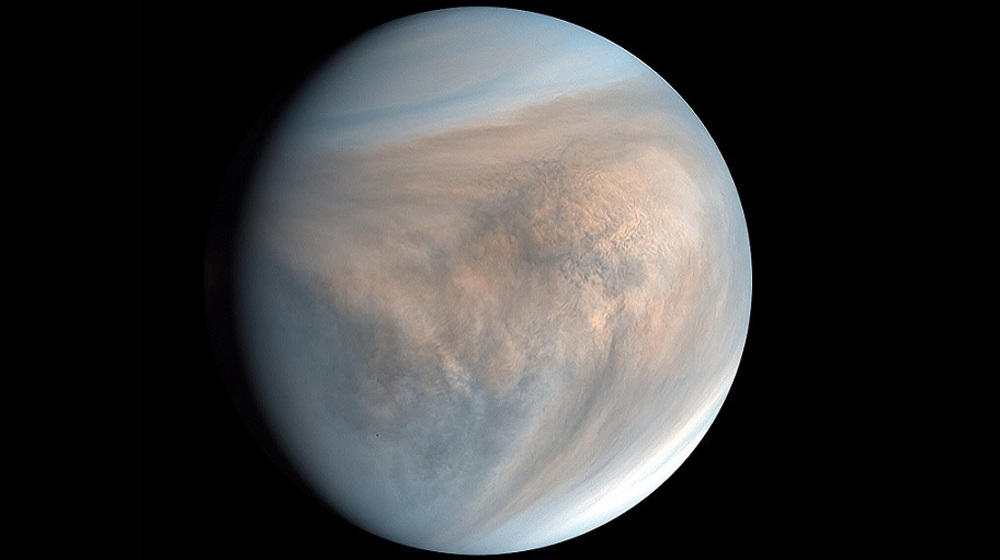NASA's Venus missions to probe divergent fate of Earth's hothouse sister planet
NASA announced plans on Wednesday to launch a pair of missions to Venus between 2028 and 2030 - its first in decades - to study the atmosphere and geologic features of Earth's so-called sister planet and better understand why the two emerged so differently.
The U.S. space agency said it was awarding about $500 million each to develop the two missions, dubbed DAVINCI+ (short for Deep Atmosphere Venus Investigation of Noble Gases, Chemistry, and Imaging) and VERITAS (an acronym for Venus Emissivity, Radio Science, InSAR, Topography, and Spectroscopy).
DAVINCI+ will measure the composition of the dense, hothouse atmosphere of Venus to further understand how it evolved, while VERITAS will map the planet's surface from orbit to help determine its geologic history, NASA said.
DAVINCI+, consisting of a fly-by spacecraft and an atmospheric descent probe, is also expected to return the first high-resolution images of unique geological characteristics on Venus called "tesserae." Scientists believe those features may be comparable to Earth's continents and suggest that Venus has plate tectonics, according to NASA's announcement.
Earth's closest planetary cousin and the second planet from the sun, Venus is similar in structure but slightly smaller than Earth and much hotter. Above its forbidding landscape lies a thick, toxic atmosphere consisting primarily of carbon dioxide, with clouds of sulfuric acid droplets.
The consequence is a runaway greenhouse effect that scorches the surface of Venus at temperatures as high as 880 degrees F (471 C), hot enough to melt lead. The "air" on Venus is so dense and pressurized that it behaves more like a fluid than gas near the surface.
Scientists believe Venus may once have harbored seas of water potentially suitable for life, before unknown forces triggered its extreme greenhouse effect, vaporizing its oceans.
"Venus is a 'Rosetta stone' for reading the record books of climate change, the evolution of habitability and what happens when a planet loses a long period of surface oceans," James Garvin, chief scientist for NASA's Goddard Space Flight Center in Maryland, said in a statement.
Venus has lately received less scientific attention than Mars, Earth's next-closest planetary neighbor, where NASA's roving astrobiology lab Perseverance landed in February.
NASA's last dedicated mission to Venus, the Magellan spacecraft, reached the planet in 1990. After four years in orbit making the first global map of the Venusian surface and charting its gravity field, Magellan was sent plunging to the surface to gather atmospheric data before ceasing operations.
The DAVINCI+ probe will ultimately meet a similar fate.
After two fly-by passes to capture time-lapse imagery of Venus' clouds, DAVINCI+ will release its spherical probe for an hour-long descent to a vast mountainous region.
Slowed first by a parachute, then by aerial friction, the probe will sample atmospheric chemistry, pressure, and temperature all the way down, and take high-resolution images as it nears the surface.
Even if it survives landing, the probe is expected to overheat within 20 minutes, Garvin said.
(Source: Reuters)
US sanctions lock ICC judges and prosecutors out of daily life: Report
US slaps new sanctions on Venezuela amid high tensions
New footage refutes Israel’s pretext for Palestinian teen’s killing
400 Harvard affiliates slam university for removing pro-Palestine professor
Official: Iran now among world's leaders in infertility treatment
VIDEO | Fighting British state
VIDEO | Press TV's news headlines
Iran, Russia stress strategic partnership as Pezeshkian, Putin meet











 This makes it easy to access the Press TV website
This makes it easy to access the Press TV website